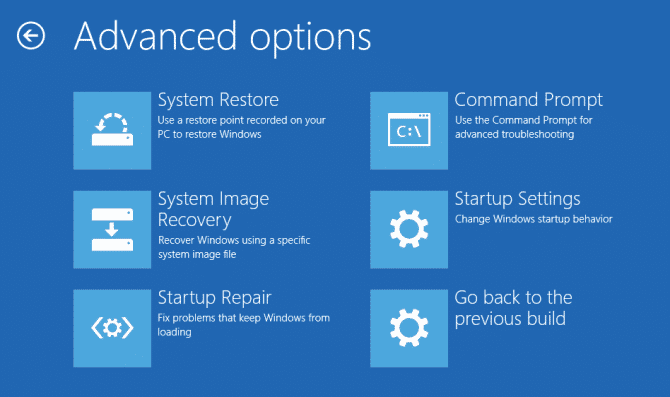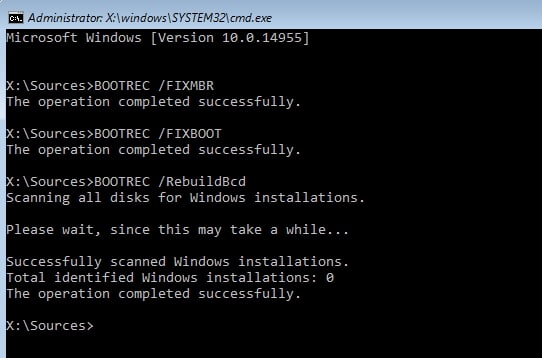How to Fix error code 0xc00000f windows 10/11 (PC wont boot)

If you are trying to boot your Windows 10 PC and you encounter the error code 0xc000000f, you might be wondering what it means and how to fix it. Windows 10 error code 0xc000000f indicates that the Boot Configuration Data (BCD) file is missing or corrupted. The BCD file contains the information that tells your PC how to boot Windows 10. If the BCD file is damaged or deleted, your PC will not be able to load Windows 10 properly. This article explores common reasons behind it and How to Fix Error Code 0xc00000f on Windows PC.
Windows 10 error code 0xc000000f
The error code 0xc000000f indicates that the Boot Configuration Data (BCD) file is missing or corrupted. The BCD file is a vital part of the Windows boot process, as it contains information about how to load the operating system and its components. Without a valid BCD file, Windows cannot start properly.
The BCD file is located in a hidden partition on your hard drive, and it is usually created and updated automatically by Windows. However, there are several possible reasons why the BCD file might be missing or corrupted:
- Power outage or a sudden shutdown that interrupted the boot process and caused the BCD file to be incomplete or corrupted
- Malware infection that damaged the BCD file or the boot sector, which is the first sector of the hard drive that contains the code to load the BCD file
- Disk error or a bad sector that corrupted the BCD file or the boot sector, making them unreadable or inaccessible
- Hardware failure or a faulty cable that prevented the PC from accessing the BCD file or the boot sector, such as a damaged hard drive, a loose SATA cable, or a faulty motherboard
- Misconfigured BIOS or UEFI settings that changed the boot order or the boot mode, such as switching from Legacy to UEFI or vice versa, or disabling Secure Boot
- Wrong partition or drive letter that confused the PC about where to find the BCD file, such as changing the active partition, resizing or deleting partitions, or cloning or swapping hard drives
Depending on the cause of the problem, there are different ways to fix the error code 0xc000000f. Here are some of the most common methods, along with step-by-step instructions on how to use them.
Perform Startup Repair
This method will try to automatically fix any issues with the BCD file or the boot sector using the Startup Repair tool. To use this method, you need to boot your PC from a Windows 10 installation media (such as a DVD or a USB flash drive), and then follow these steps:
- On the first screen, select your language, time, and keyboard preferences, and then click Next.
- Click Repair your computer in the bottom-left corner.
- On the Choose an option screen, click Troubleshoot -> Advanced options -> click Startup Repair.

- Wait for the Startup Repair tool to scan your PC and fix any issues with the BCD file or the boot sector.
If the Startup Repair tool succeeds, you will see a message saying “Startup Repair couldn’t repair your PC”. This is normal and means that your PC can now boot normally. Click Restart to reboot your PC.
If the Startup Repair tool fails, you will see a message saying “Startup Repair couldn’t repair your PC”. This means that you need to try another method.
Rebuild BCD configuration and Fix MBR
This method will manually create a new BCD file using the Command Prompt. To use this method, you need to boot your PC from a Windows 10 installation media (such as a DVD or a USB flash drive), and then follow these steps:
To do this again access advanced options and click on Command prompt. Now perform the commands below one by one and hit the enter key to execute the same.
Bootrec.exe /fixmbr Bootrec.exe /fixboot Bootrec /rebuildBcd Bootrec /ScanOs

Note: If the above command fails, you can type the following commands in cmd and hit enter after each one.
bcdedit /export C:\BCD_Backup c: cd boot attrib bcd -s -h -r ren c:\boot\bcd bcd.old bootrec /RebuildBcd

Type exit and press Enter. After that, restart your Windows. Check Windows starts normally without any startup error Windows failed to start 0xc000000f.
Check and fix any disk errors or bad sectors
This method will use the built-in Check Disk tool to scan your hard drive for any errors or bad sectors and try to fix them. To use this method, Again you need to access advanced options then select command prompt option.
In the Command Prompt window, type this command and press Enter:
chkdsk C: /f /r /x (where C is your Windows drive letter)
Wait for the Check Disk tool to scan your hard drive and fix any errors or bad sectors. This might take a long time depending on the size of your hard drive and the number of errors or bad sectors.
When the Check Disk tool is done, close the Command Prompt window and restart your PC.
Use a third-party tool to repair the BCD file or the boot sector
Also you can use a third-party tool that can fix various boot problems, such as Easy Recovery Essentials or Lazesoft Recovery Suite. These tools are usually free or have a free trial version that you can download and use. To use this method, you need to create a bootable CD or USB drive using another working PC and the third-party tool of your choice, and then follow these steps:
Insert the bootable CD or USB drive into your PC and boot from it.
Follow the instructions on the screen to launch the third-party tool and access its main menu.
Depending on the tool that you are using, look for an option that can repair the BCD file or the boot sector, such as Automatic Repair, Fix Boot Problems, or Boot Repair. Select that option and follow the steps to scan your PC and fix any issues with the BCD file or the boot sector.
When the repair process is done, remove the bootable CD or USB drive and restart your PC.
Check and replace any faulty hardware or cables
This method will involve physically inspecting your PC for any signs of hardware failure or cable damage. To use this method, you need to turn off your PC and unplug it from the power source
Open your PC case and locate your hard drive. Make sure it is securely attached to its slot and its power and data cables are firmly connected. If you see any loose or broken cables, replace them with new ones.
Check if your hard drive is making any unusual noises or vibrations. If you hear any clicking, grinding, or beeping sounds, or if you feel any excessive heat or movement from your hard drive, it might be failing or damaged. In that case, you need to replace it with a new one as soon as possible. You can also use a diagnostic tool such as CrystalDiskInfo to check the health status of your hard drive.
Check if any other components of your PC are malfunctioning or overheating. Look for any signs of physical damage, such as cracks, burns, leaks, or bulges. Also check if any fans are not spinning properly or if any dust is blocking them. If you find any faulty components or cables, replace them with new ones. You can also use a diagnostic tool such as such as Speccy to monitor the temperature and performance of your PC components.
Close your PC case and plug it back to the power source. Turn on your PC and see if the error code 0xc000000f is resolved.
These are some of the most common methods to fix the error code 0xc000000f on Windows 10. We hope that this blog post has helped you understand the causes and solutions of this boot problem. If you have any questions or comments, please feel free to leave them below.
